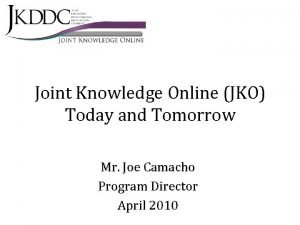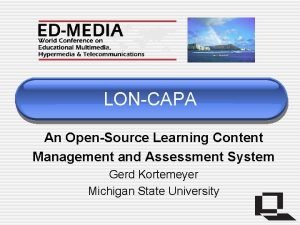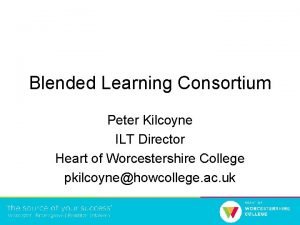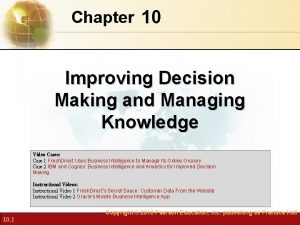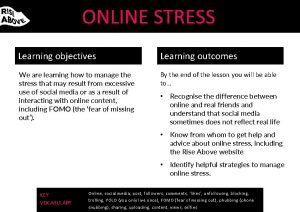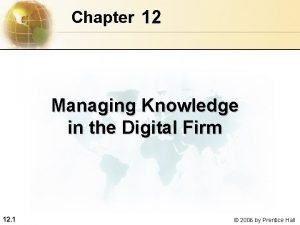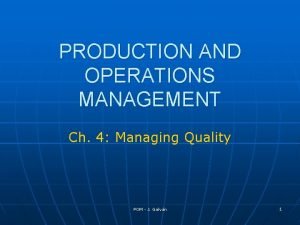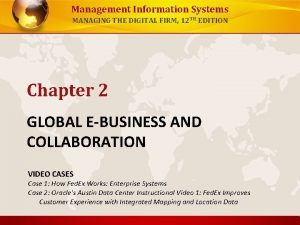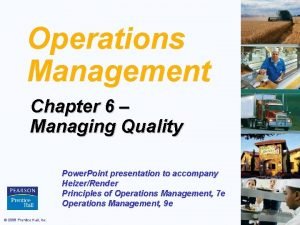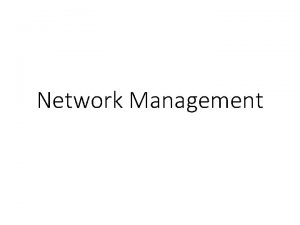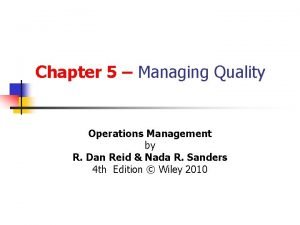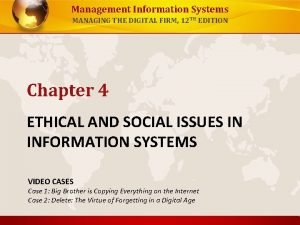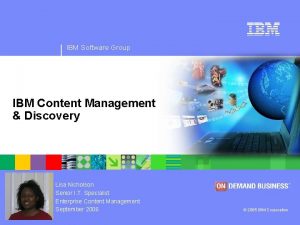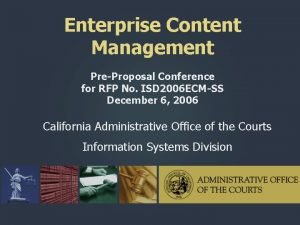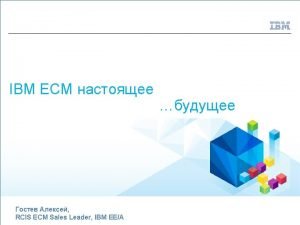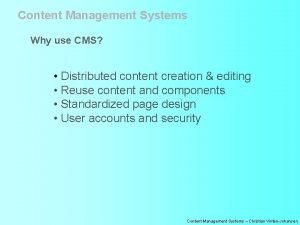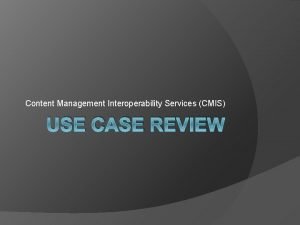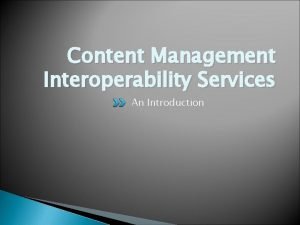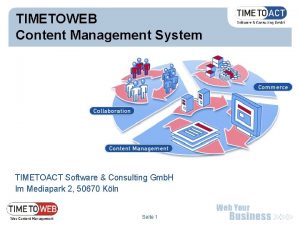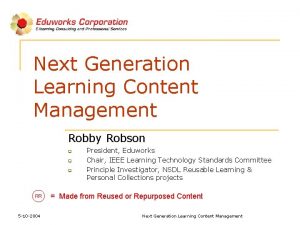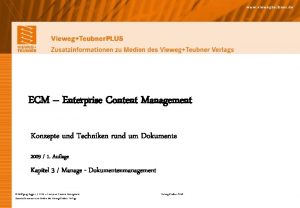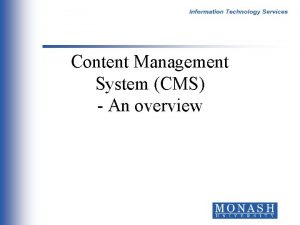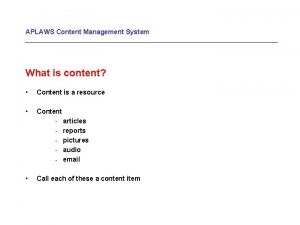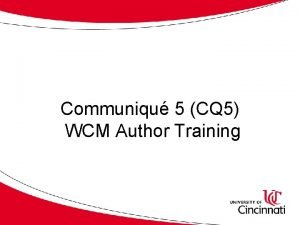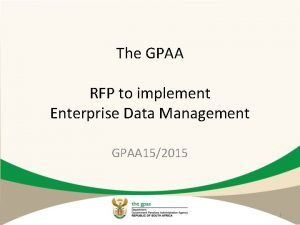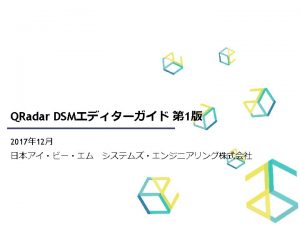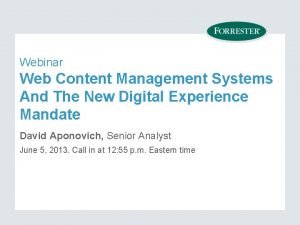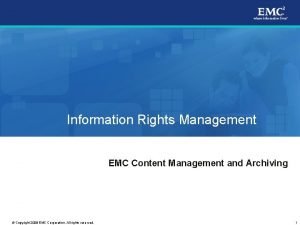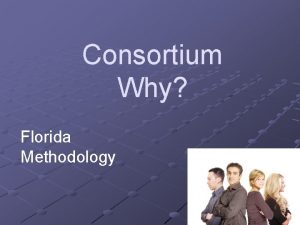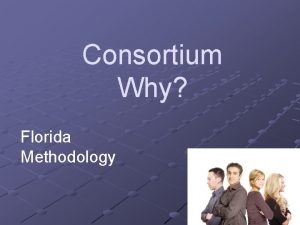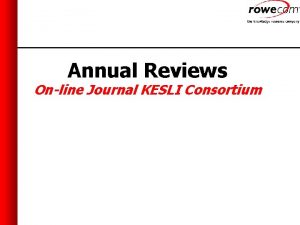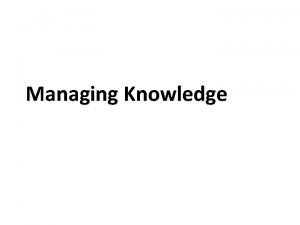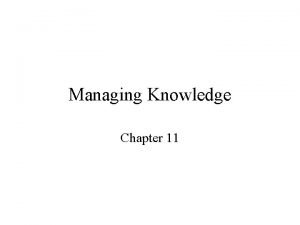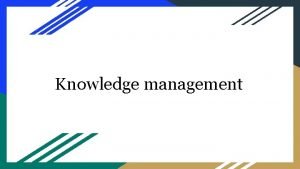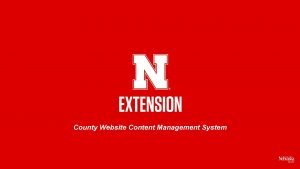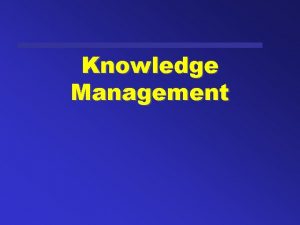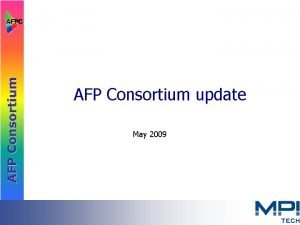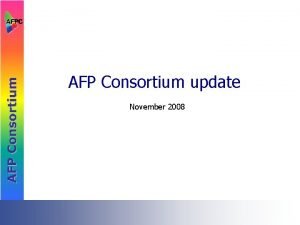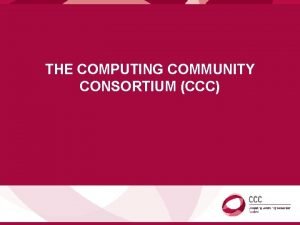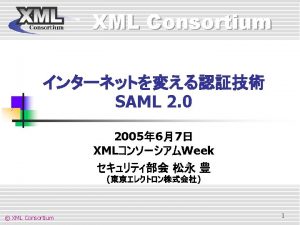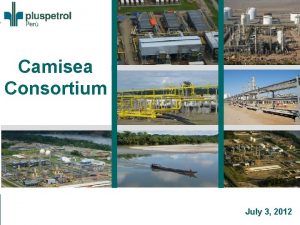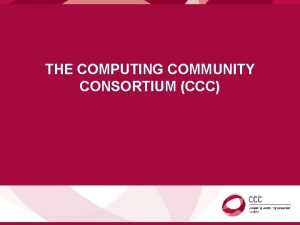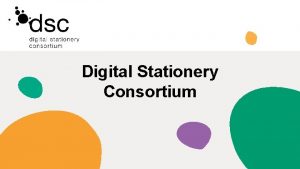knowledge management Managing Content and Knowledge Consortium Learning











































- Slides: 43

knowledge management Managing Content and Knowledge Consortium Learning Forum Study Findings Qusai Mahesri, Farida Hasanali October 30, 2001 Santa Clara, CA 1

4 - Phased Consortium Benchmarking Model knowledge management 2

Study Sponsors • • knowledge management Boehringer Ingelheim • Gmb. H • Clarica Life • Insurance Company • Dept. of • Transportation • Dept. of Veteran’s Affairs • Halliburton Company Internal Revenue Service Intel Corporation National Security Agency Schlumberger Limited Social Security Agency The MITRE Corporation The World Bank Group US Navy – Acquisition Reform Office US Navy – Chief Information Office • US Dept. of Agriculture • Xerox Corporation 3

Partners • • • knowledge management Chemical Company Washington State Library – Olympia, WA General Electric Company– Albany, NY Schlumberger Limited– Houston, TX The MITRE Corporation – Bedford, MA Johnson Controls, Inc. – Milwaukee, WI Context Integration, Inc. – Burlington, MA Dow Corning Corporation– Midland, MI Giant Eagle Inc. – Pittsburgh, PA Motorola, Inc. – Schaumburg, IL Chemical, WSL, and GE hosted face-to-face site visits; GE and MITRE hosted virtual visits. 4

Vendors Assessed • • • • knowledge management Autonomy Corporation plc Broad. Vision, Inc. Citrix Systems, Inc. Documentum, Inc. Epicentric, Inc. Fat. Wire Corporation Hummingbird Ltd. Open Text Corporation MERANT MS Content Management Server (NCompass) Plumtree Software, Inc. Stellent (Intra. Net Solutions, Inc. ) Vignette 5

knowledge management Vendor Assessment Report • 12 vendors • 110 Questions defined by user group • Online database • Sort by vendor • Compare answers across members • Print profiles • Print complete questionnaire • White papers and other documentation attached 6

knowledge management Content Management 7

Definition of a CMS knowledge management • Content Management is a system to provide meaningful and timely information to end users by creating processes that identify, collect, categorize, and refresh content using a common taxonomy across the organization. • A content management system includes people, processes, technology, and most importantly, the content itself. Provide the right information at the right time to the right person 8

A Model of The Content Lifecycle knowledge management 9

The Relationship Between KM & CM knowledge management Deliver Use Adapt Share Validate Improve Create, etc. Identify Collect Create Review Manage 10

Phases of CMS Approach knowledge management • Phase 1, Business Case – Identify strategic rationale – Estimate costs and benefits • Phase 2, Planning & Design – Analyze requirements, current processes and systems – Conduct a content audit, vendor assessment and selection, and project design • Phase 3, Implementation – Refine and deploy the CMS – Change management • Phase 4, Maintenance and Upgrading – Evolution of processes, technology, and roles over time 11

knowledge management Phase 1: Developing a Business Case for CMS 12

Three Bases for Business Case • knowledge management There are three potential bases for making the initial business case for a content management system: 1. the opportunity to reduce costs and/or increase productivity as the organization conducts its work, 2. the mission of the organization will suffer if content is not managed and delivered more effectively, and 3. the opportunity to increase the revenue stream through the better support for sales and marketing by enabling customers to find content they need and want or by selling content to customers. 13

Basis of Justification For CMS knowledge management 14

Investments: Partner and Sponsors knowledge management 15

Lessons Learned: Business Case knowledge management • Economic gains should be as high a priority as functionality • CM should be a business initiative, even if lead by IT • Integrate with larger strategic initiatives • Roll out in waves or phases, providing value for the next phase • Steering Committee is key to approval • Involve financial people in the team from the outset 16

knowledge management Phase 2: Planning and Design 17

Key Steps knowledge management 1. Establish structure and roles for design process 2. Determine user requirements 3. Conduct content audit/assessment 4. Conduct workshops to define taxonomy and metadata 5. Conduct as-is and to-be process analysis 6. Estimate value 7. Assess current and future technology 8. Prioritize technology requirements for vendor assessment 9. Evaluate and select technology 10. Finalize project plan and roles (and request for implementation funding if not done in initial business case) 18

Structure For CMS Planning, Design, & Implementation Phase knowledge management 19

Determining User Requirements • • knowledge management Conduct focus group sessions Create cross-functional teams Create story boards for the workflow Examples: – WSL identified and got feedback from three different groups of users – Schlumberger got repeated input from users – GE included end user representatives on the design and deployment team 20

Conducting a Content Audit knowledge management • Proved to be a significant predictor of success in many CMS outcomes – 60% of partners conducted content audits – 27% of sponsors have done so to-date • Content is expensive to manage and keep • Not all content is worth it • An audit can also uncover savings: – From multiple subscriptions – From duplicate documents and databases 21

How Taxonomy Was Generated knowledge management 70% Human generated 73% 30% Partners Sponsors A combination of both 9% 0% Systems generated 0% 0% 10% 20% 30% 40% 50% % of sponsors and partners 60% 70% 80% 22

How Is This Assessment Done? Organizational Analysis As-Is Analysis To-Be Design Human Change Management knowledge management 23

Lessons Learned: Design and Implementation knowledge management • Creating and Acquiring Content – Conduct a content audit: prune ruthlessly – Authors own the content – Publishing tools must be “ridiculously easy to use” • Content Management Processes – Spend enough time creating business rules – Maintenance is as important as creation – Create content stewards in each domain / unit – Allocate enough time to these roles • Content Delivery – No dead ends; always have a help desk somewhere 24

Lessons Learned: Design and Implementation, Cont. knowledge management • Taxonomy and metadata – Reflect the user’s view of the world – Use SMEs for a first pass; validate and expand with user groups – Provide templates and wizards whenever possible – Taxonomy comes before technology – usually 25

knowledge management Phase 3: Implementation 26

Phase 3: Implementation Objectives knowledge management • Content Management System should be – Aligned with requirements and specifications – On-time and on-budget – Integrated into the enterprise workflow • Incorporation of change management and system evolution processes • Hand-off to the operational maintenance team • Issues of most concern: – Scope – Implementation Team – Security – Technology 27

How The CMS Was Deployed? knowledge management 28

Phase 3: Implementation Structure and Roles knowledge management • Project Manager or team leader – Ensures teamwork & alignment to implementation plan – Ensures the team has the correct resources and environment to deliver a successful project – Interfaces with the program office to align resources in advance of project milestones and deliverables 29

Security and Access Privileges knowledge management • Security usually refers to two things: – Hardware & other security (e. g. firewalls, intrusion detection, etc. ) – Access privileges to content and applications • Access privileges – Define groups of people based on functional use rather than organizations (Communities of Practice) – Work with the idea that all new content is publicly available unless restricted as opposed to keeping everything restricted and then adding access for each group 30

Access Parameters Used knowledge management 31

High Level Logical Architecture knowledge management Employee Administrator Customer Executive Partner Integration Framework Portal Financial Applications Staffing HR Applications Audience Manufacturing Apps Inventory Applications Middleware Application Server Application Services Web Services IT Services Integration [EAI] Publishing Security Data Integration Content Management Messaging Process Automation Personalization Fault Tolerance Collaboration XML Load Balancing OS / Database Platform Hardware & Network Services Applications Foundation Services Foundation Layers 32

Six Common Technical “gotchas” knowledge management 1. Not having a common vision of both the business strategy and the role of IT in enabling that strategy. 2. Architecture teams often confuse product standards with an architecture. An architecture is a set of principles. • It's not the components of the architecture. It's not the products themselves. • It's the design principles. 3. The architecture is not derived from business requirements. • If you cannot connect with the drivers of the business, you simply will not be aligned with the business strategy. 4. Not taking a systemic approach to enterprise architecture and ensuring logical consistency across 33

Six Common Technical “gotchas”, cont. knowledge management 5. Treating architecture as a one-time event. • The business is under constant pressure to change. • The technology is constantly changing. • Your architecture effort must be constantly ongoing and highly iterative. 6. Choosing to perform infinite engineering over just enough architecture. • The most common mistake is to take one narrow aspect of the architecture and decide to devote enormous hours, and sometimes years, to analyzing it - for example, Enterprise Java Beans versus. Net. Infinite engineering is possible. You simply cannot allow yourself to engage in it! Speed is more important than breadth! Breadth is more important than depth! 34

Lessons Learned: Implementation knowledge management • Implementation – Roll out in waves and phases – Ensure quick wins: deliver capability early and regularly • Implementation Team is 100% committed to the development and deployment of the CMS project. • Use an iterative process – Align frequent milestones and associated deliverables • During the rollout, partner with your constituents – Start with units who want to be involved – Build on successes and expand from there 35

Lessons Learned Implementation, cont. knowledge management • Manage the expectations of internal customers during rollout and introductions of associated technology/change • Encourage the use of the content management system through reinforcement and promotions • Provide the right level of support, training and ongoing coaching 36

Partner Challenges During Design & Implementation knowledge management • Technology selection and implementation • Creating common processes and standards • Time allocation • Ensuring quality of content – roles and accountability 37

Enablers Of Change Used for Planning, Design, & Implementation knowledge management 38

knowledge management Phase 4: Maintaining and Expanding a CM Initiative Structures and Roles 39

A Generic Support Structure Model knowledge management 40

knowledge management Centralized Roles 41

knowledge management Decentralized Roles 42

knowledge management Q&A 43
 Jko knowledge
Jko knowledge Characteristics of esp
Characteristics of esp Learning content management system open source
Learning content management system open source Blended learning consortium
Blended learning consortium Static content vs dynamic content
Static content vs dynamic content Improving decision making and managing knowledge
Improving decision making and managing knowledge Cuadro comparativo entre e-learning b-learning y m-learning
Cuadro comparativo entre e-learning b-learning y m-learning Examples of educational goals and objectives
Examples of educational goals and objectives Managing knowledge in the digital firm
Managing knowledge in the digital firm Gcche
Gcche Knowledge creation and knowledge architecture
Knowledge creation and knowledge architecture Managing quality in operations management
Managing quality in operations management Infrastructure and asset management
Infrastructure and asset management Asset management vs project management
Asset management vs project management Management information system managing the digital firm
Management information system managing the digital firm Chapter 6 managing quality
Chapter 6 managing quality Managing entity network management
Managing entity network management Managing entity network management
Managing entity network management Managing quality in operations management
Managing quality in operations management Management information systems managing the digital firm
Management information systems managing the digital firm Ibm enterprise content management
Ibm enterprise content management Content management system
Content management system Ecm rfp
Ecm rfp Ibm ecm cloud
Ibm ecm cloud Distributed content management system
Distributed content management system Introduction to content management
Introduction to content management Content management system use case diagram
Content management system use case diagram Content management interoperability services
Content management interoperability services Timetoact software & consulting gmbh
Timetoact software & consulting gmbh Ibm web content management
Ibm web content management Robson management corporation
Robson management corporation Events management team structure
Events management team structure Ecm wiesbaden
Ecm wiesbaden Content management system project plan
Content management system project plan Aplaws
Aplaws Umbraco content management system
Umbraco content management system Igloo content management system
Igloo content management system Cq wcm
Cq wcm Kauppo
Kauppo Data governance rfp
Data governance rfp Qradar content management tool
Qradar content management tool John newton gravity media
John newton gravity media Forrester wave web content management
Forrester wave web content management Emc content management
Emc content management
